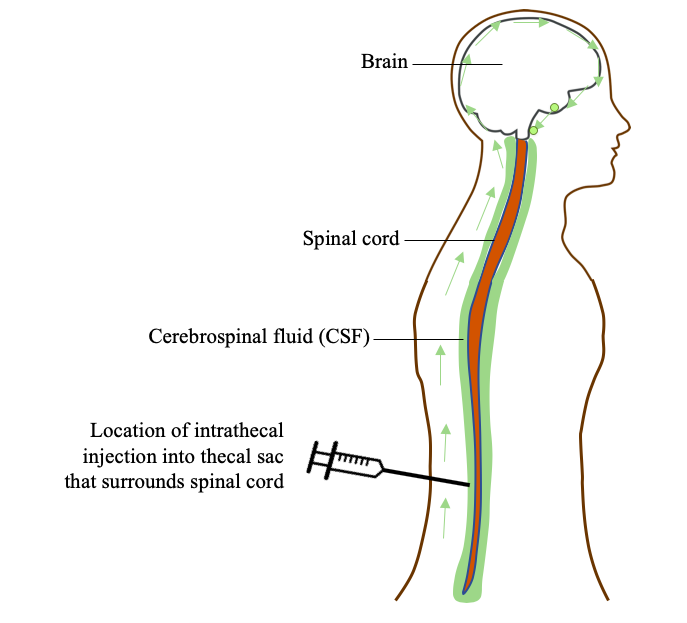Intrathecal Administration: What You Need To Know Now
Ever wondered how doctors deliver medication directly to the spinal cord? Intrathecal administration makes it possible, offering targeted relief and treatment for various conditions.
Intrathecal administration involves injecting drugs into the spinal canal, specifically the subarachnoid space, where they can reach the cerebrospinal fluid (CSF). This method bypasses many of the body's natural barriers, allowing for more direct and effective treatment. It finds use in various medical applications, including spinal anesthesia, chemotherapy, and chronic pain management. Imagine a scenario where localized anesthesia is needed for a surgical procedure below the umbilicus. Spinal anesthesia, achieved through intrathecal administration, provides just that a neuraxial technique placing local anesthetics directly into the subarachnoid space, inducing a block that allows for pain-free surgery. But the utility of intrathecal methods extends far beyond the operating room.
| Term | Description |
|---|---|
| Intrathecal Administration | A method of drug delivery directly into the spinal canal, specifically the subarachnoid space, to reach the cerebrospinal fluid (CSF). |
| Subarachnoid Space | The space surrounding the spinal cord, filled with CSF, located between the arachnoid mater and pia mater. It's also referred to as the intrathecal space in the caudal part of the spine. |
| Cerebrospinal Fluid (CSF) | The clear fluid that bathes the brain and spinal cord, providing cushioning, nutrient transport, and waste removal. |
| Spinal Anesthesia | A neuraxial technique where local anesthetic is injected into the subarachnoid space to block nerve signals and provide pain relief. |
| Layers Traversed (Midline Approach) | Skin, subcutaneous fat, supraspinous ligament, interspinous ligament, ligamentum flavum, dura mater, subdural space, arachnoid mater, and finally the subarachnoid space. |
| Lumbar Cistern | An enlargement of the intrathecal space containing the cauda equina, located in the lumbar region of the spine. |
| Cauda Equina | The collection of spinal nerve roots within the intrathecal space caudal to the conus medullaris, resembling a horse's tail. |
| Intrathecal Portal | An implanted device providing access to the intrathecal space for medication delivery, commonly used for chronic pain management. |
| Clinical Significance | Used for pain management, chemotherapy, spinal anesthesia, and potential applications like drug infusions and electrical modulation implants. |
| Considerations | Challenges include CSF turnover, inadequate delivery to targets, and anatomical complexity of the lumbosacral region. |
| Reference | Spinal.com |
- Adriana Limas Kids A Glimpse Into Her Family Life Updated
- Emmas Fortune Net Worth Of Watson Chamberlain More

Intrathecal Access/Injection (Spinal) Technique and Overview The

Snapshot What are Intrathecal Injections? National Ataxia Foundation

Lumbar Puncture Layers